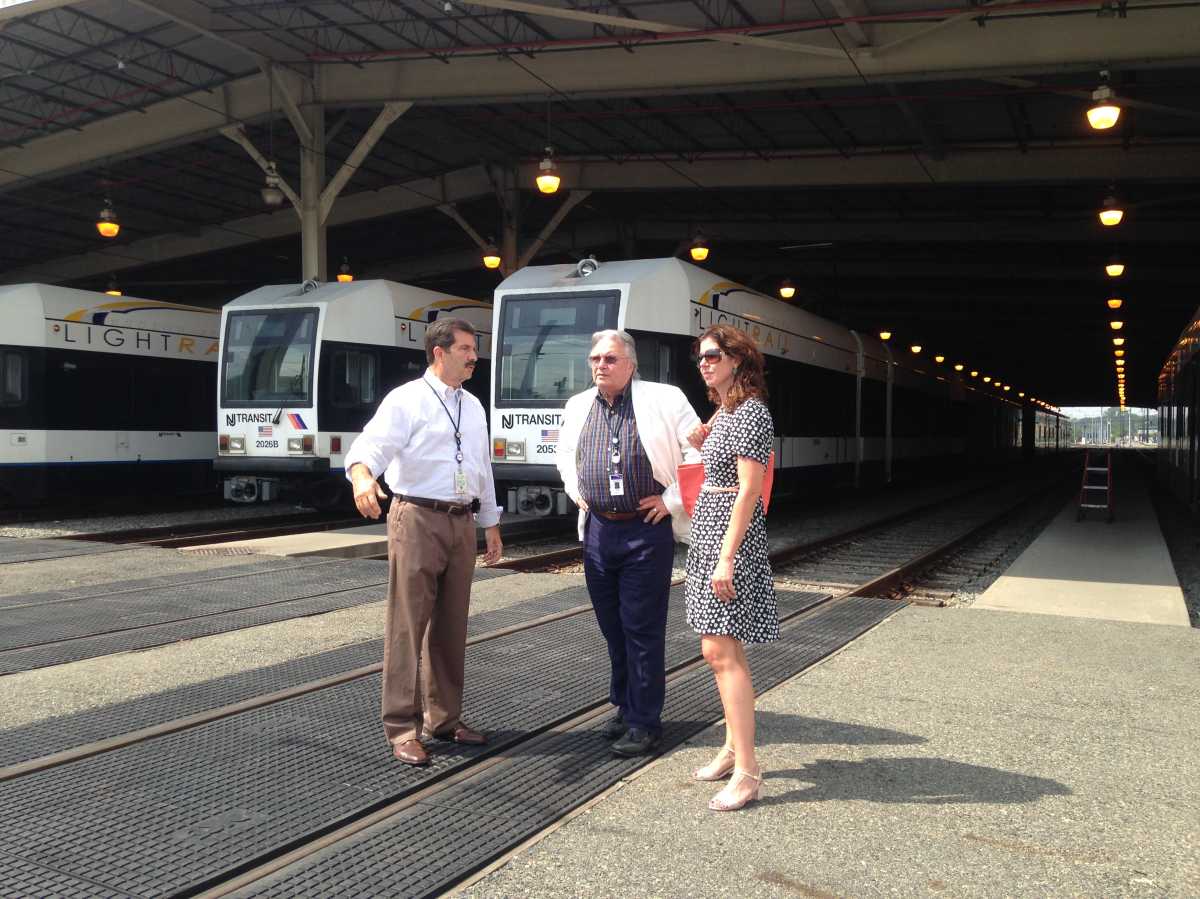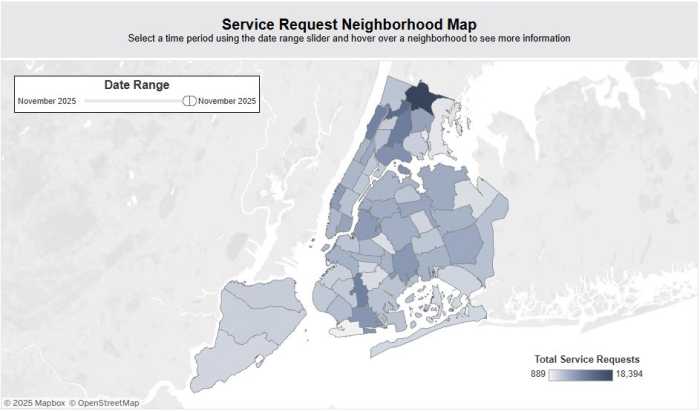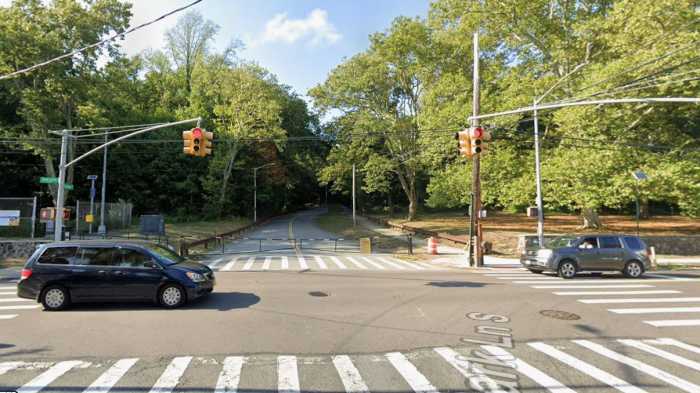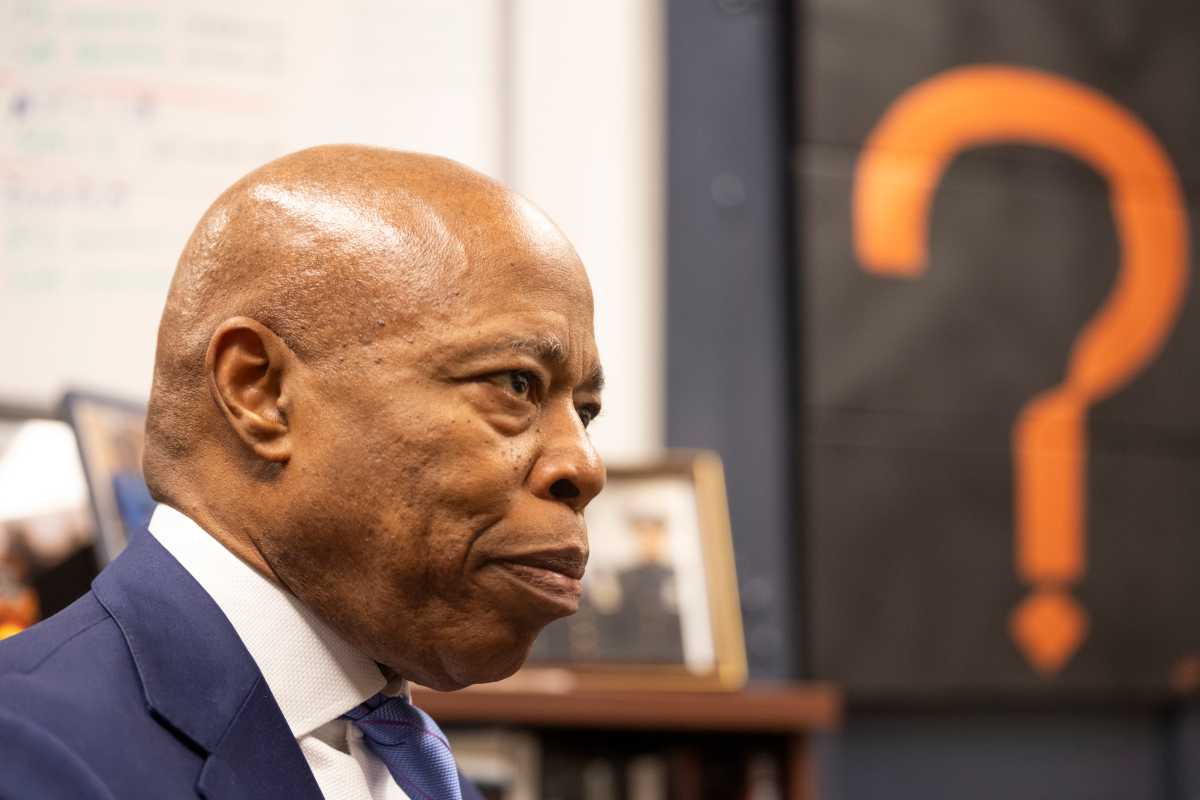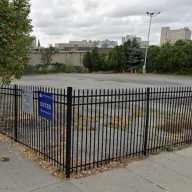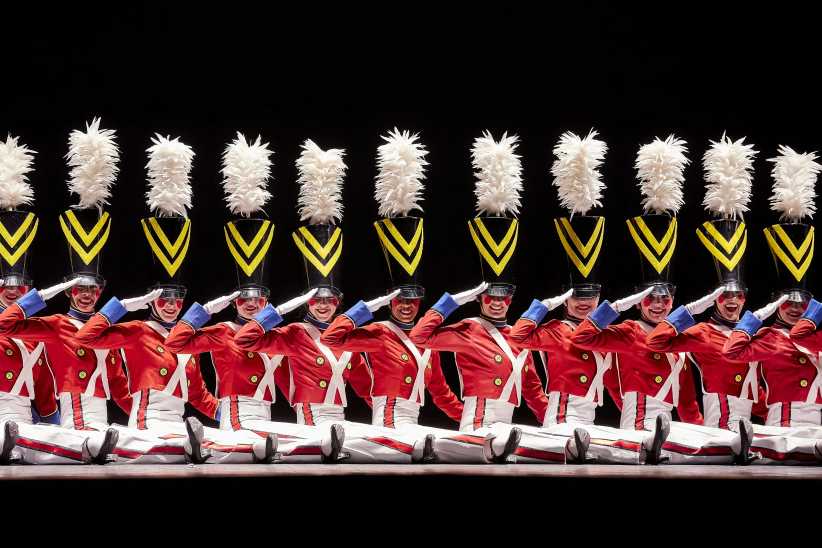In order to get the wheels moving on a plan to bring light rail service to western Queens, Councilwoman Elizabeth Crowley took a trip to New Jersey to visit the Hudson-Bergen Light Rail line and gather information on how such a project could affect Glendale and the surrounding communities.
The councilwoman first presented her idea for a light rail service connecting Glendale and Long Island City in an exclusive interview with the Ridgewood Times last month. She used her trip to the Hudson-Bergen line on July 29 to examine how it was built, how it operates and how the communities benefit from the light rail line.
Crowley explained that the Hudson-Bergen line was funded through a mixture of public and private investments, expressing that she would like to see that same combination of funding for a light rail line in Glendale. However, bringing light rail into Glendale would not cost nearly as much as the Hudson-Bergen line, mainly because the tracks and right-of-way are already in place.
“It was interesting to see how it was put together by a public/private partnership,” Crowley said in a phone interview with the Ridgewood Times. “The cost of building a station shouldn’t be as expensive. This would be in the tens of millions, not the hundreds of millions.”
The Hudson-Bergen line runs through Bayonne, Jersey City, Hoboken, Weehawken, Union City and North Bergen. The line began its operation in 2000 and expanded over the next 10 years, and it currently services nearly 50,000 daily passengers.
“They have built a 21st-century rail all within the last 15 years. When they started back in 2000, 15 years ago, Bayonne had a small light rail and they expanded that,” Crowley said. “The Hudson-Bergen line is the second most-used passenger rail line in New Jersey. I was interested in learning on how they first started and then grew and what has happened in and around the communities they run through.”
The Hudson-Bergen line uses a fleet of all-electric train cars, which are the size of about two or three city buses, Crowley said.
“That would be a difference I would propose. We already have the infrastructure in place for diesel trains,” Crowley said, adding that hybrid train cars that run on diesel and battery power is an attractive option. “I think there are a lot of differences in the old train cars than what is used today.”
She used the hybrid buses as an example of how efficient a hybrid locomotive can be, noting that the train cars could produce less pollution and create less noise since they would be hauling only passengers instead of freight.
In addition to producing less air and noise pollution, a light rail line in Glendale could potentially create economic opportunities for the community, according to the legislator.
“I was impressed with all the activity around the rail line. Opening businesses, modern infrastructure that helped build a stronger community. I would see that as a benefit of the rail,” Crowley said. “We’ve been burdened by the freight rail, why not use the train tracks there for the public’s benefit?”
The next step in Crowley’s plan to bring a light rail to Glendale include meeting with representatives from various agencies including the MTA and Department of City Planning and creating a board in support of her plan.
“I am going to put together a board in support of it to engage local elected officials and representatives from city agencies and businesses to come and see what has worked in some areas and what we could do to get this project some traction,” Crowley explained. “I am going to have a meeting with all different colleagues in government to talk about it more.”
RECOMMENDED STORIES

